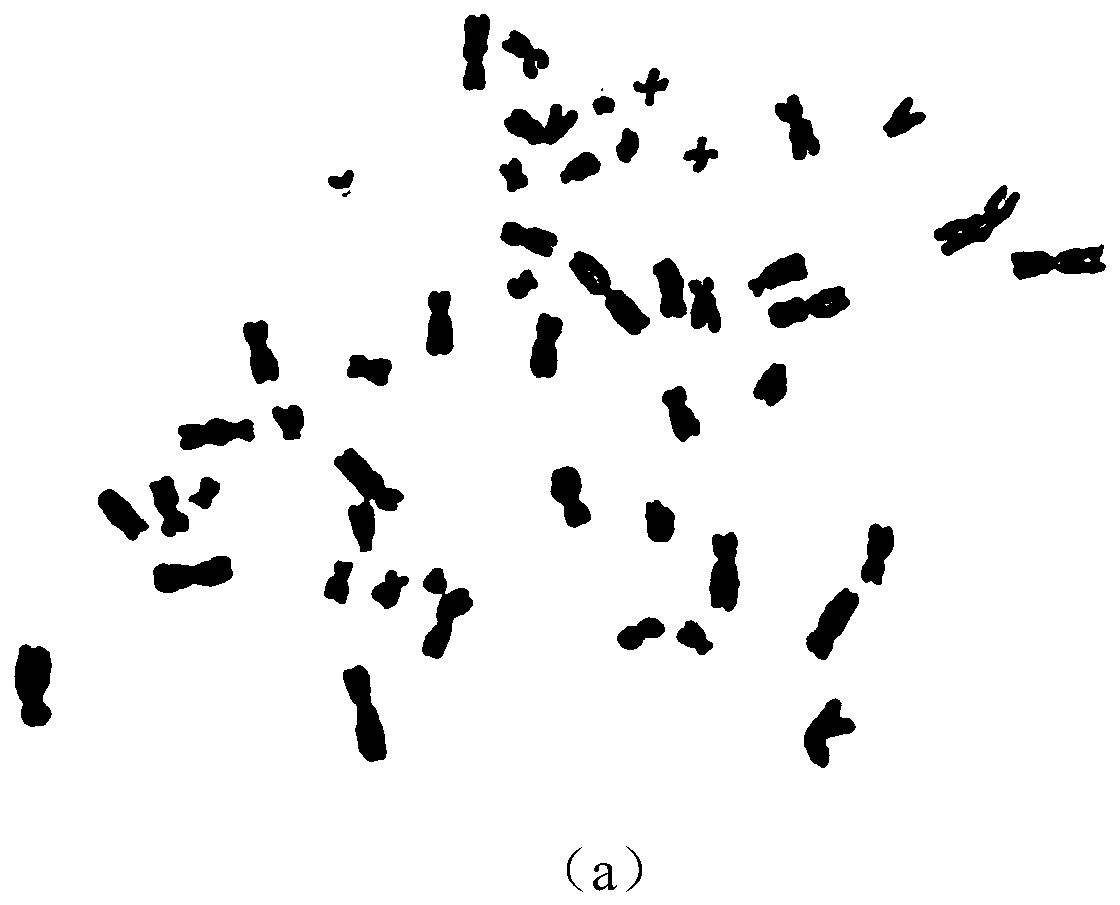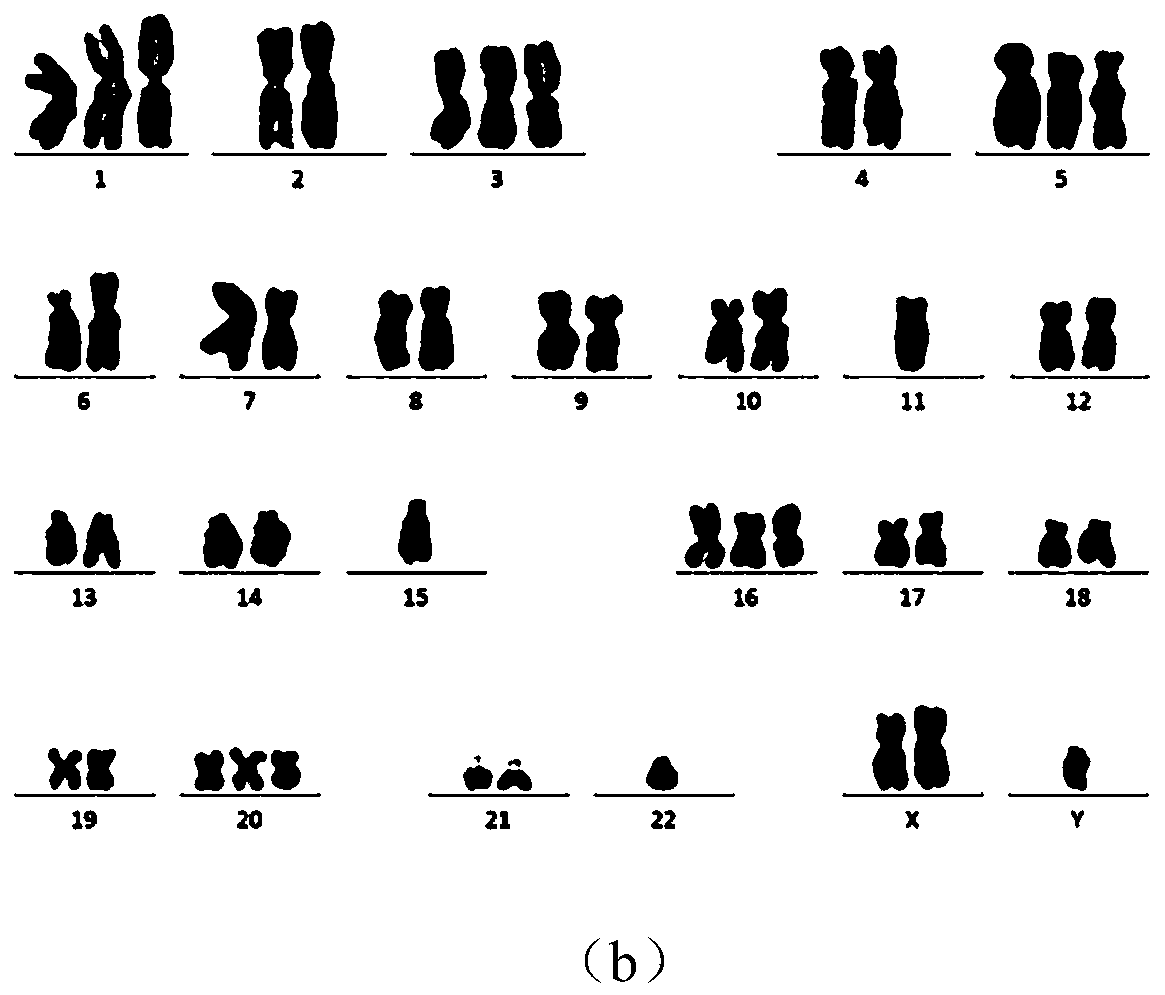A kind of human glioma cell line and its establishment method and application
A human glioma and cell line technology, applied in the medical field, can solve problems such as restricting preclinical research and scarcity of glioma cell lines, achieving strong proliferation ability, easier success in primary culture, and easier success in establishing lines Effect
- Summary
- Abstract
- Description
- Claims
- Application Information
AI Technical Summary
Problems solved by technology
Method used
Image
Examples
Embodiment 1
[0046] Example 1 Construction method of human glioma cell line BT-127
[0047] 1. Patient tissue sample processing
[0048] 1.1 Overview of the patient's condition:
[0049] The patient, male, 37 years old, was diagnosed with glioblastoma. He had undergone glioma surgery twice before the resection of glioma tissue. The lesion also metastasized under the scalp. It can be seen that the invasiveness of this glioma is very strong. There are few cases of glioma metastasizing to the extracranial. The number of cultured glioma cell lines is even less, so the human brain glioma cell line of the present invention has important significance for the study of glioma invasion and metastasis and drug testing.
[0050] In addition, the patient underwent radiotherapy and chemotherapy before the resection of glioma tissue, so the human glioma cell line of the present invention is very likely to be resistant to radiotherapy and chemotherapy, and the PDX model thus established may have the abi...
Embodiment 2
[0065] Morphological observation of embodiment two BT-127 cells
[0066] Place the culture flask for cultivating BT-127 cells under an inverted microscope and observe under bright field. figure 1 It is a photo of BT-127 cells cultured in G1 generation. The results show that the main body of BT-127 cells is spindle-shaped, and there are irregular branches or bifurcations ( figure 1 -A, 100×); when the cell density was high, the contact growth inhibition was not obvious, and it was in a state of cross-stacking growth, and radiated outward from the aggregation ( figure 1 -B, 100×).
[0067] figure 1 -C is a photo of BT-127 cells cultured in G20 generation. figure 1 -D is the photo of BT-127 cells G50 generation culture. Depend on figure 1Comparison of the four pictures A-D shows that after 50 subcultures, the morphology of the cells remains unchanged, which shows that the BT-127 cells prepared by the present invention can be stably subcultured, which is helpful for long-term...
Embodiment 3
[0068] Karyotype analysis of embodiment three BT-127 cells
[0069] The BT-127 cells growing in the logarithmic phase were taken, and colchicine was added to make the final concentration 0.2 μg / ml, and cultured in a 37° C. incubator for 4 hours. Cells in the mid-division stage were collected and fixed with a fixative solution (methanol: glacial acetic acid = 3:1 (V / V), ready-to-use) for about 1 hour, and then the cell suspension was dropped on a pre-cooled slide, and used Stained with Giemas staining solution, and the number of chromosomes was counted under a microscope. see results figure 2 , after the BT-127 cells were continuously passaged, the chromosomes still maintained the characteristics of the chromosomes of human-derived tumor cells, and the modal number (M) of the chromosomes was concentrated between 45 and 55, accounting for 70%. It can be seen that the BT-127 cells are aneuploid, Chromosome number and structural aberrations are serious, consistent with the gene...
PUM
 Login to View More
Login to View More Abstract
Description
Claims
Application Information
 Login to View More
Login to View More - R&D
- Intellectual Property
- Life Sciences
- Materials
- Tech Scout
- Unparalleled Data Quality
- Higher Quality Content
- 60% Fewer Hallucinations
Browse by: Latest US Patents, China's latest patents, Technical Efficacy Thesaurus, Application Domain, Technology Topic, Popular Technical Reports.
© 2025 PatSnap. All rights reserved.Legal|Privacy policy|Modern Slavery Act Transparency Statement|Sitemap|About US| Contact US: help@patsnap.com



